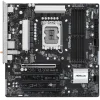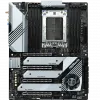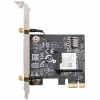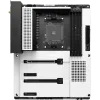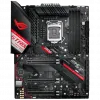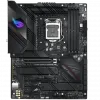PCI Express 4.0 (PCIe 4.0) is the fourth generation of the Peripheral Component Interconnect Express (PCIe) interface standard for connecting various components inside a computer system. It is a significant improvement over its predecessor, PCIe 3.0, offering higher data transfer rates and increased bandwidth.
Key features of PCIe 4.0 include:
-
Increased Bandwidth: PCIe 4.0 doubles the maximum bandwidth per lane compared to PCIe 3.0. It offers up to 16 GT/s (gigatransfers per second) per lane, resulting in higher data transfer rates.
-
Higher Data Transfer Rates: PCIe 4.0 x16 configuration can achieve a maximum data transfer rate of 64 GB/s, significantly improving performance for high-bandwidth applications like gaming, video editing, and data-intensive tasks.
-
Backward Compatibility: PCIe 4.0 is backward compatible with previous PCIe generations. It means PCIe 4.0 devices can be used with older PCIe slots, but they will operate at the lower speed of the older generation.
-
Improved Efficiency: PCIe 4.0 introduces enhancements to improve power efficiency and reduce latency, making it more energy-efficient and responsive.
-
Targeted Applications: PCIe 4.0 is particularly beneficial for graphics cards, high-performance storage devices (e.g., NVMe SSDs), and other bandwidth-intensive peripherals.
To take full advantage of PCIe 4.0, both the motherboard and the connected components (e.g., CPU, GPU, SSD) must support the PCIe 4.0 standard. As of my last update in September 2021, PCIe 4.0 was already available on some modern motherboards and CPUs. However, the adoption of PCIe 4.0 was still not as widespread as PCIe 3.0 at that time.
